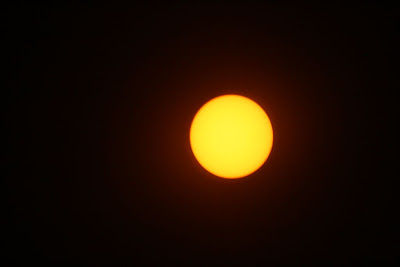The longest annular eclipse of this millenium is round the corner. At 11 minutes 8 seconds, the eclipse of 15th January 2010 will be the longest till 3043 AD. Understandably amateur astronomers are excited about it. South East coast of India provides a good opportunity to witness this spectacle. Coming as it does in the peak winter, clear skies are almost guaranteed too. Almost, because you never know if the next depression decides to come around at that time!
Granted, an annular eclipse is probably not as exciting as a total eclipse. Nevertheless it is a celestial event that one would not get to see too often. We, at ABAA are preparing for the event. Several of our members are planning a trip to witness the event. Some are getting their telescopes ready for the event while others are content to carry their camera/tripod to capture the excitement.
The following pictures were taken by Chandrashekar with solar filters. The exposure times are also given to provide an indication of exposure times required. Of course, the actual exposure time depends on several factors like how clear the sky is, type of filter used etc. Those who are preparing to photograph the event are advised to try out their equipment and do a full dress rehersal to ensure that everything works as planned. Right now the Sun is going through a solar minimum that is puzzling astronomers. As the photographs here show, there is not a single sun spot. Let's hope a few will appear to add some more excitement during the eclipse!

Camera: Cannon ESO 400D
Lens: 500mm at f/8
Exposure: 1/640
ISO 800

Camera: Cannon ESO 400D
Lens: 500mm at f/6.3
Exposure: 1/500
ISO 800

Camera: Cannon ESO 400D
Lens: 500mm at f/6.3
Exposure: 1/200
ISO 800

Camera: Cannon ESO 400D
Lens: 500mm at f/6.3
Exposure: 1/80
ISO 800
Regards,
Chandra

i was in dubai till today and i camw back i am in
ReplyDelete